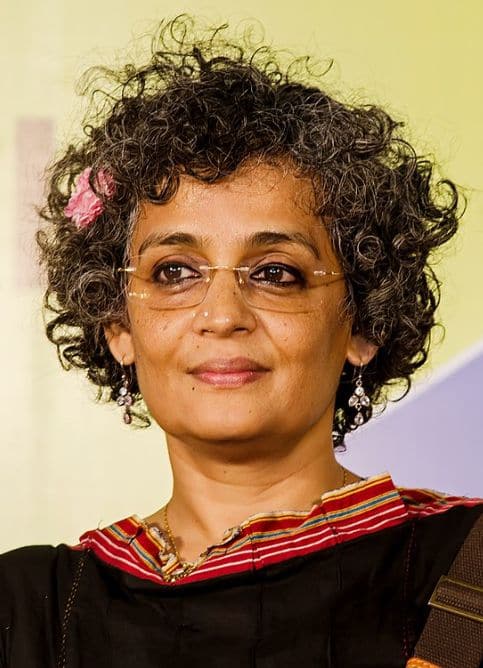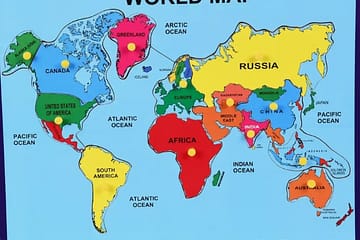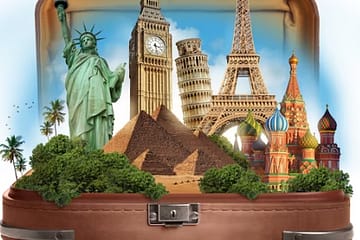
“The God of Small Things” by Arundhati Roy
General knowledge
Characters
- Who is Pappachi,?
Ans. Pappachi is Revathy Ipe, the father of Ammu and Chacko. - What is, the full name, of Baby Kochamma,?
Ans. Navomi Ipe.
3 Who are, the twin characters, in the novel?
Ans. Estha (Esthappen) and Rahel. - Who is ,Ammu?
Ans. The mother, of Estha a,nd Rahel. - Who is Chacko?
Ans. Ammu’s brother ,and Estha and Rahel’s uncle. - Who is ,Sophie Mol?
Ans. Chacko’s daughter from his marriage to Margaret Kochamma. - Who is, Velutha?
Ans. A Dalit carpenter and an employee at the Ipe family pickle factory. - Who is, Margaret Kochamma?
Ans. Chacko’s ex-wife and Sophie Mol’s mother. - Who is, Mammachi?
Ans. The mother of Ammu and Chacko, and wife of Pappachi. - Who is, Kochu Maria?
Ans. The family’s maid.
Plot and Themes - What is, the chief theme of (The God of Small Things),?
Ans. The chief theme, of the Novel, is historical, and social factors, on personal lives, focusing on forbidden love, family dynamics, and social standards. - Where is, the novel fixed?
Ans. In an Indian village “ Ayemenem in Kerala” - How does, the novel originate?
Ans. On ariving of Rahel from abroad to Ayemenem. - What heart-breaking incident marks the climax of the story?
Ans. Accidental death of Sophie Mol. - What kind of insect did Pappachi decern/discover,?
Ans. Moth. - Why is, Pappachi’s moth momentous?
Ans. Pappachi’s moth embodies his unrecognized attainments, and his annoyance, and frustration which impacts his family. - How is, the story described?
Ans. Through a non-linear narrative, shifting between dissimilar timelines and viewpoints. - What prohibited relationship is central to the novel?
Ans. The love affair between Ammu and Velutha. - What communal issue, does Velutha’s character highlight?
Ans. Rigid caste system in India. - How does, Ammu die?
Ans. Poverty/ isolation.
The Novel The God of Small Things written by Arundhati Roy.This Novel focuses on the theme of forbidden love.This novel explores love and how love can’t be ignored when confronted with social boundaries.
- What does, the river, in the novel (The God of Small Things) indicate,?
Ans. It signifies both, life and death, being a place of infantile innocence and heartbreak. - Whatdoes,Pappachi’s moth ,represent?
Ans. Pappachi’s misunderstood achievement, and the enduring bitterness ,and misuse he imposed, on his family. - What motif, is constantly used to depict childhood?
Ans. The motif of banned joy, and innocence. - What does, the history house signify?
Ans. The decaying colonial past, and the burden of family history. - What is, the importance of the pickle factory ,in the story?
Ans. It signifies the family’s business, and their linking to traditional Indian culture. - Who is, the author of (The God of Small Things),?
Ans. Famous & Popular Arundhati Roy. - When was, (The God of Small Things) published,?
Ans. 1997. - What literary award, did the novel win,?
Ans. Booker Prize in 1997. - What is, the genre of (The God of Small Things),?
Ans. Literary fiction. - How is, the structure, of the novel designated,?
Ans. Non-linear, and fragmented. - In what period, is the novel mainly fixed?
Ans. The 1960s and 1990s. - Which Indian state, is the novel set in,?
Ans. Kerala. - What historic incident, is referenced in relation to Chacko’s schooling?
Ans. Chacko studied at Oxford, during the time of the British colonial, impact in India. - What does, the caste system, signify in the novel?
Ans. The engrained social hierarchy, and discernment in Indian society. - How does, the novel address, post-colonialism,?
Ans. Through viewing, the lingering effects, of British colonial rule, on Indian society, and personal identities. - Which character says, “Anything can occur to anybody? It’s best to be ready”?
Ans. Ammu. - Who said, “They all broke the rules. They all crossed, into prohibited region. They all tampered, with the laws, that lay down who should be loved, and how”?
Ans. This is, a narrative voice reflecting, on the actions of the characters. - What is, the well-known opening line of the novel?
Ans. (May in Ayemenem is a hot, brooding month)… - How does, the title (The God of Small Things), relate to the novel?
Ans. It denotes to the small, often overlooked details, and actions, that shape the lives of the characters. - What occurs, to Estha after Sophie Mol’s death,?
Ans. Estha, is sent to live, with his father, in Calcutta.
The Novel The God of Small Things written by Arundhati Roy.This Novel focuses on the theme of forbidden love.This novel explores love and how love can’t be ignored when confronted with social boundaries. - Who signifies, the (Big God), and the (Small God) in the novel,?
Ans. The (Big God) signifies social standards, and laws, while the (Small God), signifies personal longings, and outlawed love. - What is, the importance, of Rahel’s return to Ayemenem,?
Ans. It signifies, her effort to reunite with her past, and the loss of her infantile. - What does, the (Orange Drink Lemon Drink Man), episode signify in Estha’s life,?
Ans. It signifies his trauma, and the loss of blamelessness. - What role ,does religion , perform in the novel,?
Ans. Religion is represented as both; a source of comfort, and a means of enforcing social limits. - Define Pappachi’s concerns with Mammachi.
Ans. Pappachi is rude to Mammachi, exemplifying patriarchal subjugation. - How does, Chacko’s political beliefs impact his actions,?
Ans. Chacko, is a Marxist, who identifies with the working class, but is also hypocritical in his personal life. - What internal conflict, does Baby Kochamma expression,?
Ans. Baby Kochamma fights with unanswered love and bitterness, leading to manipulative behavior. - What does ,Sophie Mol’s ,visit to Ayemenem indicate,?
Ans. It represents, the intrusion of Western culture, and the disruption of the family’s symmetry.
All questions/answers are as per Novel The God of small things, Just for general knowledge
- How does ,Rahel cope ,with her past shock?
Ans. Rahel copes ,through expressive detachment, and ultimately returns to Ayemenem seeking closure.



0 Comments